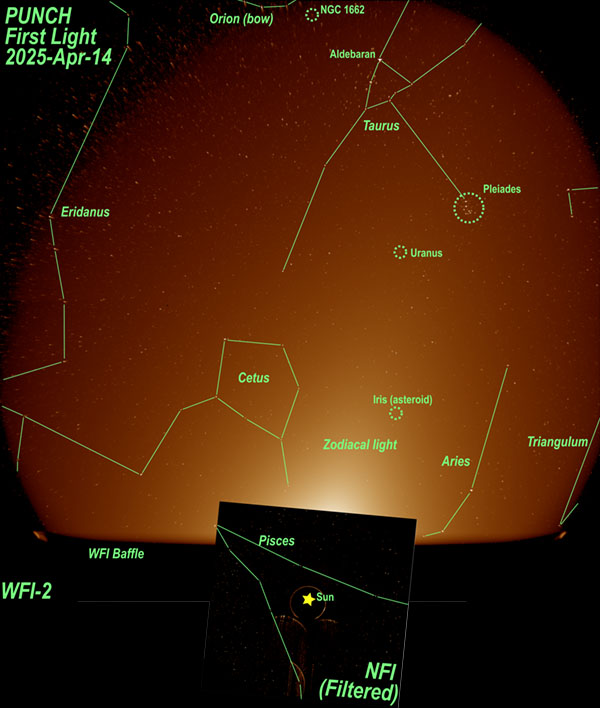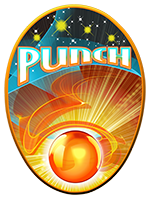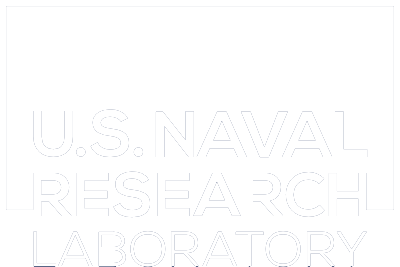PUNCH collects spectacular first light
This is a PUNCH Science Nugget

This first-light mosaic from PUNCH shows how the NFI and WFI fields of view fit together. Celestial objects are visible down to 9th magnitude (asteroid Iris) in the raw image direct from the WFI-2 camera; and stars are visible down to 6th magnitude in the lightly processed image from NFI. The “diffuse glare” is zodiacal light, caused by dust orbiting the Sun.
PUNCH opened the protective doors of its first two instruments, the Narrow Field Imager (NFI) and one of its three Wide Field Imagers (WFI-2) on 14-April. First-light images from WFI and NFI reveal that they are in focus, functioning nominally, and able to collect the deep field images needed for PUNCH science. The first image from WFI-2 is a spectacular view of approximately 40° of sky, including zodiacal light, several constellations, and various other astronomical objects. The first image from NFI reveals in-focus performance and resolution of the faint starfield close to the Sun. These two images are composited here to show how the instruments’ data will fit together once commissioning is finished.
Over the next few weeks, the operations team will commission all four the instruments, verifying function, performance, and calibration, and begin routine science observations; and the PUNCH Science Operations Center (SOC) will begin “constellation commissioning”, stitching together the received images into mosaics 90° across, for analysis by the science team and greater community.
PUNCH has an open data policy and once routine science operations begin, data will be distributed to everyone, for any purpose, as soon as they are available. You can access PUNCH data, and learn the instruments and how to use them, at the PUNCH website: punch.space.swri.edu.
PUNCH science nuggets are archived on our News Page.



